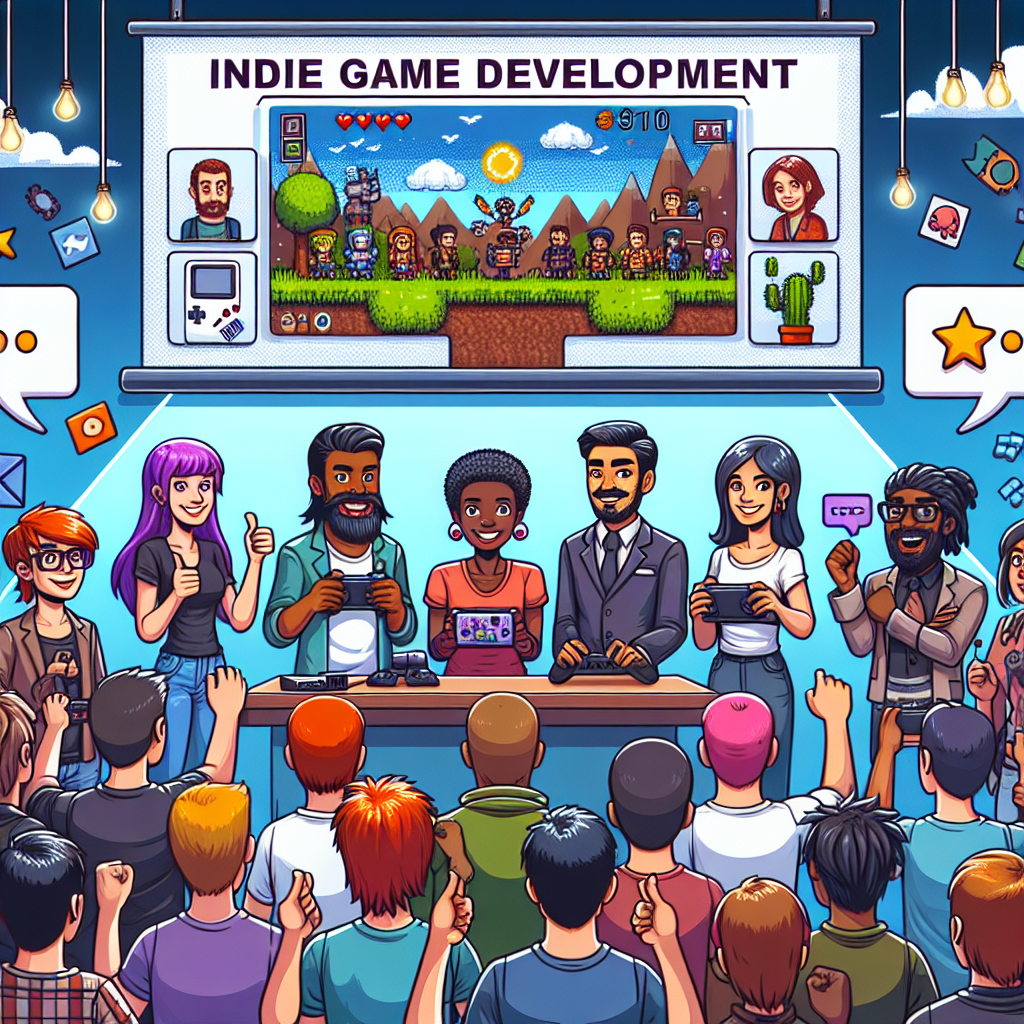Community-Building for Indie Developers: Tips to Engage Your Players
In the ever-evolving landscape of gaming, community-building has emerged as a vital aspect of success for indie developers. As small teams often struggle to compete with larger studios, fostering a loyal and engaged player base can provide crucial support. Building a community not only enhances player experience but can also lead to valuable feedback that helps improve the game. Here are essential tips for indie developers to engage their players and cultivate a thriving community.
1. Choose the Right Platform
The first step in building a community is selecting the right platform. Depending on your target audience, you may want to consider platforms like Discord, Reddit, Steam, or even social media channels like Twitter and Facebook. Each platform has its strengths:
- Discord is popular for real-time communication and engaging players through voice chats and channels dedicated to different aspects of the game.
- Reddit allows for discussion threads where players can share tips, fan art, and experiences, fostering a sense of ownership.
- Steam provides an integrated community hub where players can leave reviews and connect with each other.
Select a platform or combination of platforms that suits your game’s style and audience. Remember to be active and engage with your players wherever they are.
2. Create a Welcoming Environment
The key to any successful community is ensuring that it feels welcoming to newcomers. Develop clear community guidelines that promote respectful behavior and establish a culture of inclusivity. Consider creating channels for specific discussions, such as feedback or bug reports, to keep conversations organized and focused.
Encourage players to introduce themselves in a dedicated channel or section. As players build connections, they’re more likely to stay engaged and participate in discussions.
3. Engage Regularly with Updates and Content
Keep your community engaged by providing regular updates about your game’s development. Share your successes, challenges, and any new features or content that are in the pipeline. Transparent communication not only builds trust but also invites players to be part of the journey, fostering deeper connections to your game.
Consider sharing behind-the-scenes content, such as concept art or developer commentary, to give players insight into your creative process. Additionally, you can host AMA (Ask Me Anything) sessions or livestreams where players can ask questions directly to you and your team.
4. Incorporate Player Feedback
Your players are often your best source of insight. Create avenues for constructive feedback through dedicated feedback channels, surveys, or beta testing. Show players that you value their opinions by implementing their suggestions when feasible.
Highlight changes that arise from community feedback to reinforce the idea that their input matters. This not only encourages further sharing of ideas but fosters a collaborative development process that strengthens community ties.
5. Host Events and Contests
Hosting events can encourage players to engage with your game and with one another in fun, interactive ways. Consider organizing themed play sessions, in-game contests, or challenges. For example, hosting a speedrun event or a creative competition where players submit fan art can create buzz around your game.
Offering rewards such as exclusive in-game items, merchandise, or even shout-outs on social media can boost participation. Events not only build excitement around your game but also foster camaraderie among players who share similar experiences.
6. Leverage Social Media
Social media can amplify your community-building efforts. Use platforms such as Twitter, Instagram, and TikTok to share updates, highlight community creations, and promote events. User-generated content, such as fan art and gameplay clips, can be great promotional material that showcases the enthusiasm of your player base.
Engage with players through polls, questions, or challenges, inviting them to share their thoughts and creations. Remember to use appropriate hashtags to increase visibility and reach a broader audience.
7. Encourage Modding and Custom Content
If applicable, consider allowing players to create user-generated content (UGC) or mods for your game. Providing modding tools or documentation can lead to a flourishing sub-community around custom content. This not only extends your game’s lifespan but also gives players a sense of ownership and investment in the game.
Highlighting popular mods or UGC in your official channels can promote engagement and encourage more players to participate in creating content for your game.
8. Build Personal Connections
Lastly, remember the importance of personal connections. Address players by name where possible, respond to their comments, and recognize contributions to the community. Sharing your passion for game development and forming personal connections with players can transform casual fans into dedicated supporters.
Consider personal touches, such as handwritten thank-you notes to early supporters or acknowledgment shout-outs in credits for dedicated community members. These gestures contribute to a more profound sense of belonging and appreciation.
Conclusion
Building a community as an indie developer can be a powerful way to enhance player engagement and support the growth of your game. By choosing the right platforms, maintaining active communication, and fostering a welcoming environment, you can cultivate a thriving space for your players. Remember to be adaptable and responsive as your community evolves, and enjoy the deep connections that arise from sharing your game with others. A strong community not only supports your current project; it can also pave the way for future successes in your development career.




